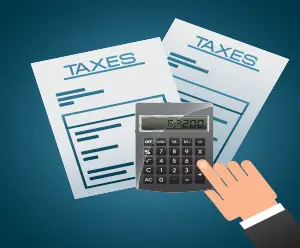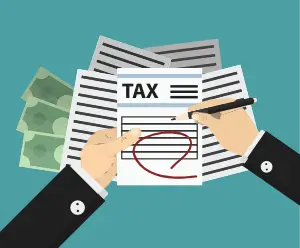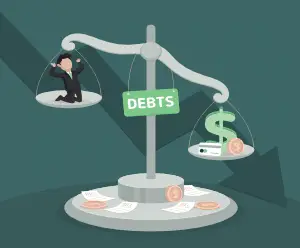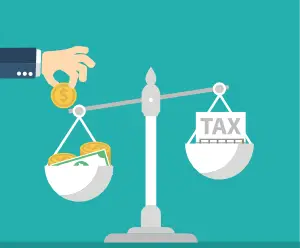
Understanding the IRS Substitute for Return
Click to ask Mike Ask Mike The Internal Revenue Service (IRS) Substitute for Return (SFR) is a term many taxpayers

Addressing tax debt through bankruptcy is a multifaceted process often clouded by misconceptions. This detailed guide aims to unravel the intricacies of this significant financial strategy, providing individuals with the comprehensive knowledge necessary to make informed decisions.
Bankruptcy is not a surrender but a strategic legal tool individuals employ independently to address tax and financial issues. Despite common beliefs, tax debts can indeed be discharged through bankruptcy. This process doesn’t entail direct collaboration with the IRS, and understanding its nuances is essential for those considering it as a financial strategy. While bankruptcy can discharge federal tax liability, seeking guidance from a bankruptcy attorney is highly advised to navigate the intricate rules effectively.
Important Considerations:
Before delving into the intricacies of tax debt resolution through bankruptcy, several critical factors must be understood:
Dischargeable and Non-Dischargeable Tax Debts:
Understanding which tax debts can be discharged through bankruptcy is pivotal:
Bankruptcy Chapters and Tax Debt Resolution:
There are two primary chapters of bankruptcy relevant to tax debt resolution:
Navigating the intricate rules governing the discharge ability of tax debt involves adherence to specific temporal criteria:
To qualify for tax debt discharge through bankruptcy, individuals must adhere to ethical and legal standards. The guide emphasizes the importance of avoiding intentional tax evasion and submitting fraudulent tax returns. An example highlighting the disqualification resulting from the use of a fake Social Security number serves as a reminder of the ethical considerations tied to tax debt resolution.
Filing for bankruptcy triggers the automatic stay, an immediate cessation of all IRS collection activities. This provides relief from active IRS collections, including wage garnishments and bank levies, during the bankruptcy process. The automatic stay offers individuals a breathing space to reevaluate their financial situation and work towards a more stable future.
Pros:
Cons:
In conclusion, resolving tax debt through bankruptcy is a complex process with profound implications and potential outcomes that demand a thorough understanding. While bankruptcy can be a viable strategy to discharge federal tax liability, seeking professional guidance, particularly from a bankruptcy attorney, is strongly recommended. We advise you to consult with a bankruptcy attorney for this.
You can now ask our AI assistant any questions you have about your tax debt or any tax-related issues. Whether you’re unsure about payment plans, need clarification on penalties, or want information on how to resolve your tax situation. Our AI is ready to assist you with all your tax-related concerns.

By interacting with our AI assistance, you agree to our terms & conditions. Enjoy our AI Tax Assistant responsibly.
Ask me any questions...
Related Posts

Click to ask Mike Ask Mike The Internal Revenue Service (IRS) Substitute for Return (SFR) is a term many taxpayers

Click to ask Mike Ask Mike The Internal Revenue Service (IRS) Substitute for Return (SFR) is a term many taxpayers

Click to ask Mike Ask Mike The Internal Revenue Service typically operates within a 10-year window, commencing from the

Click to ask Mike Ask Mike The Internal Revenue Service (IRS) operates within specific timeframes dictated by statutes of limitations

Click to ask Mike Ask Mike understanding the ins and outs of the 10-year statute of limitations (SOL) is essential.
Recent Posts

Click to ask Mike Ask Mike The Internal Revenue Service (IRS) Substitute for Return (SFR) is a term many taxpayers

Click to ask Mike Ask Mike The Internal Revenue Service (IRS) Substitute for Return (SFR) is a term many taxpayers

Click to ask Mike Ask Mike The Internal Revenue Service typically operates within a 10-year window, commencing from the

Click to ask Mike Ask Mike The Internal Revenue Service (IRS) operates within specific timeframes dictated by statutes of limitations

Click to ask Mike Ask Mike understanding the ins and outs of the 10-year statute of limitations (SOL) is essential.
Disclaimer: This is educational content, not legal, accounting, or tax advice.
This is a tax debt resource website, not to be used in lieu of a tax attorney or for legal advice. All information, Ai chat responses, articles, materials, and content are intended to inform users on a variety of tax topics. In no way is it intended to be construed as accounting, legal, tax, other services or advice. This site is not intended to be used to avoid tax penalties or tax debt that may be imposed by law. Terms and Conditions. Your use of this site constitutes acceptance of the following terms and conditions.
This is a tax debt resource website, not to be used in lieu of a tax attorney or for legal advice. All information, Ai chat responses, articles, materials, and content are intended to inform users on a variety of tax topics. In no way is it intended to be construed as accounting, legal, tax, other services or advice. This site is not intended to be used to avoid tax penalties or tax debt that may be imposed by law. Terms and Conditions. Your use of this site constitutes acceptance of the following terms and conditions.
© 2023 · Tax Debt Monster, Inc. All rights reserved

For all Tax Professionals that would like to partner up with us. By partnering with us, you’ll help us connect and make a positive impact in the tax community. Partner up with us and receive a complimentary Ai Tax Sidekick to help support your clients at no cost! Click here if you’re interested in our Partner-Up program

By interacting with our AI assistance, you agree to our terms & conditions. Enjoy our AI Tax Assistant responsibly.
How may I help you with your tax issue?